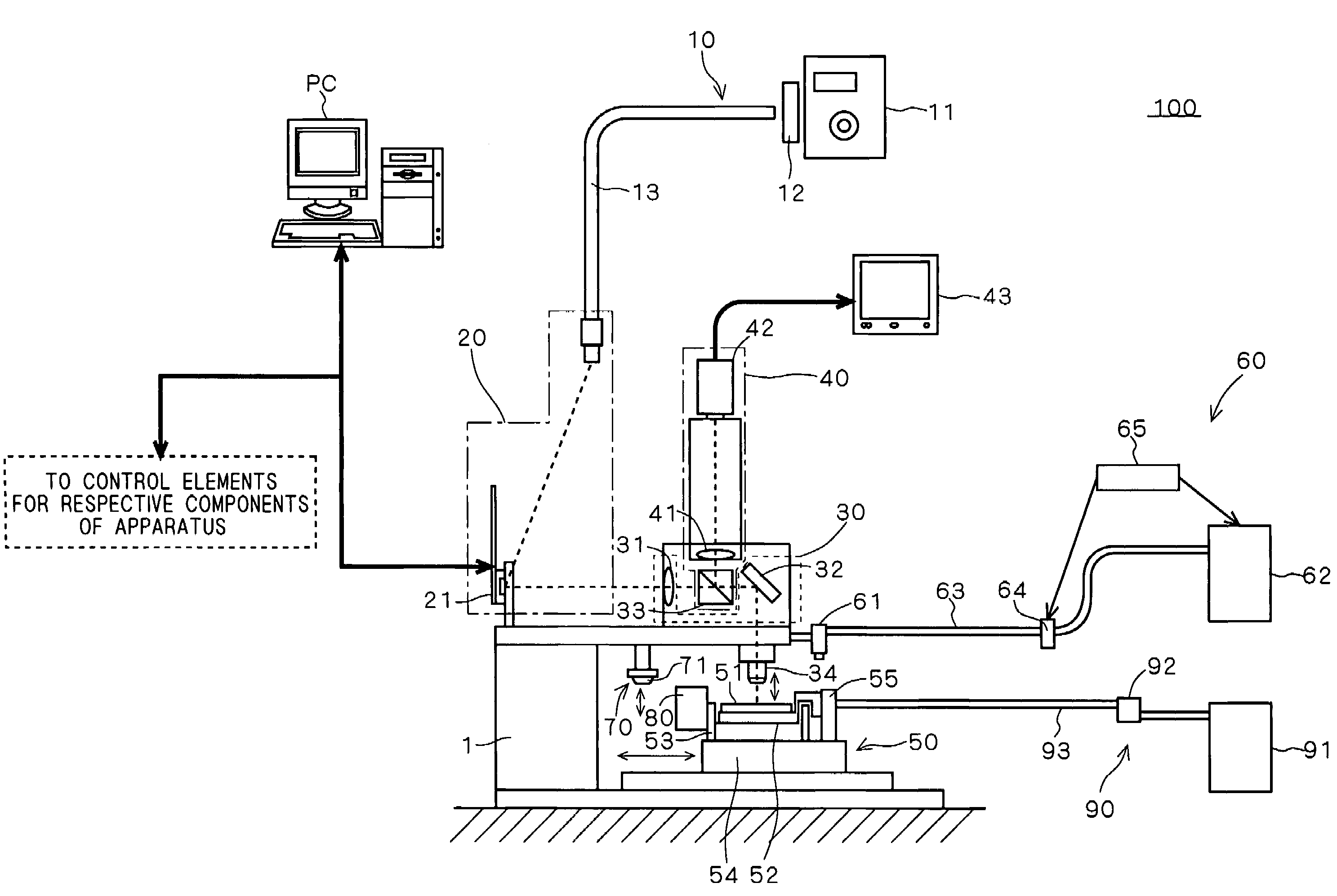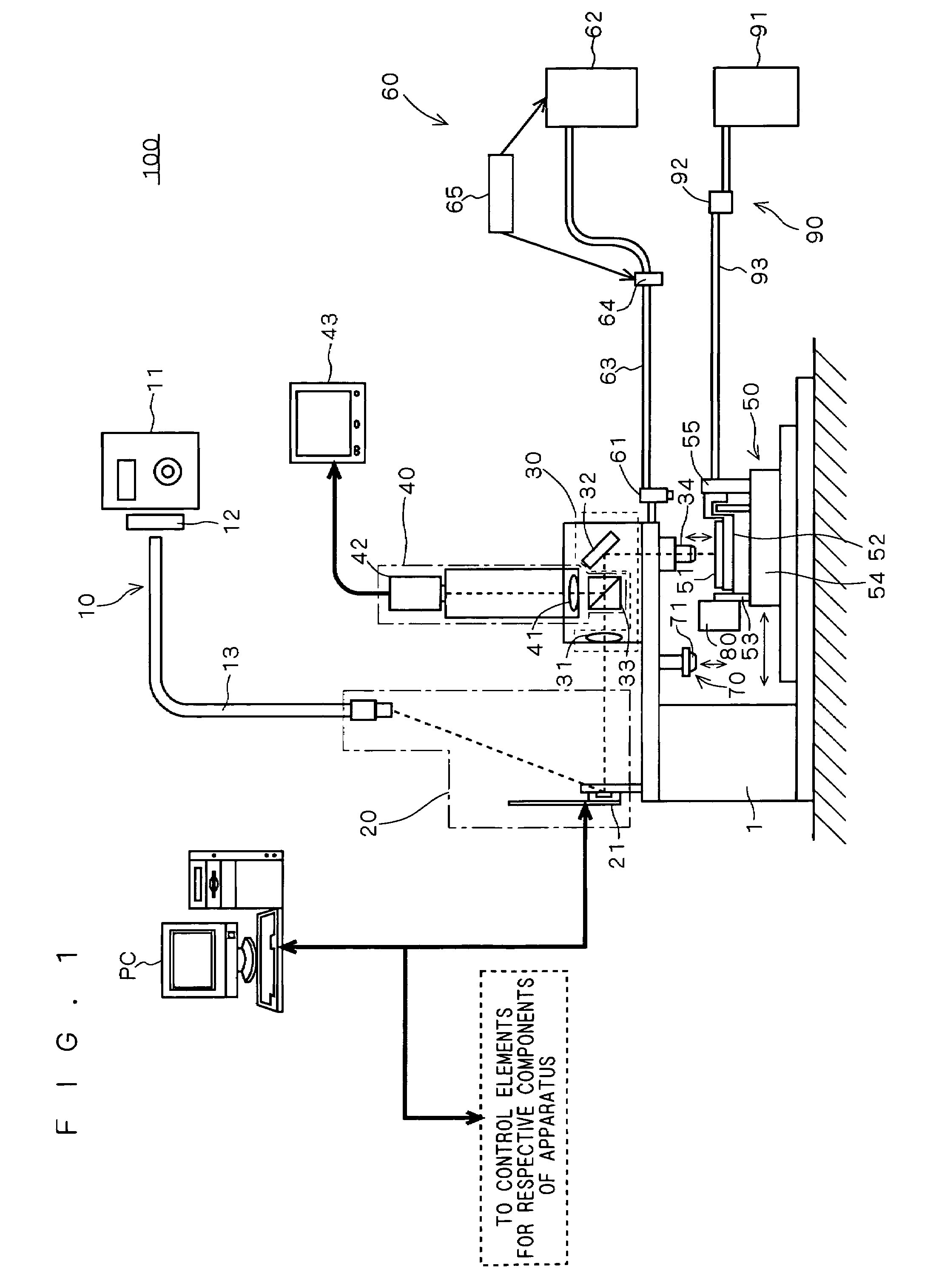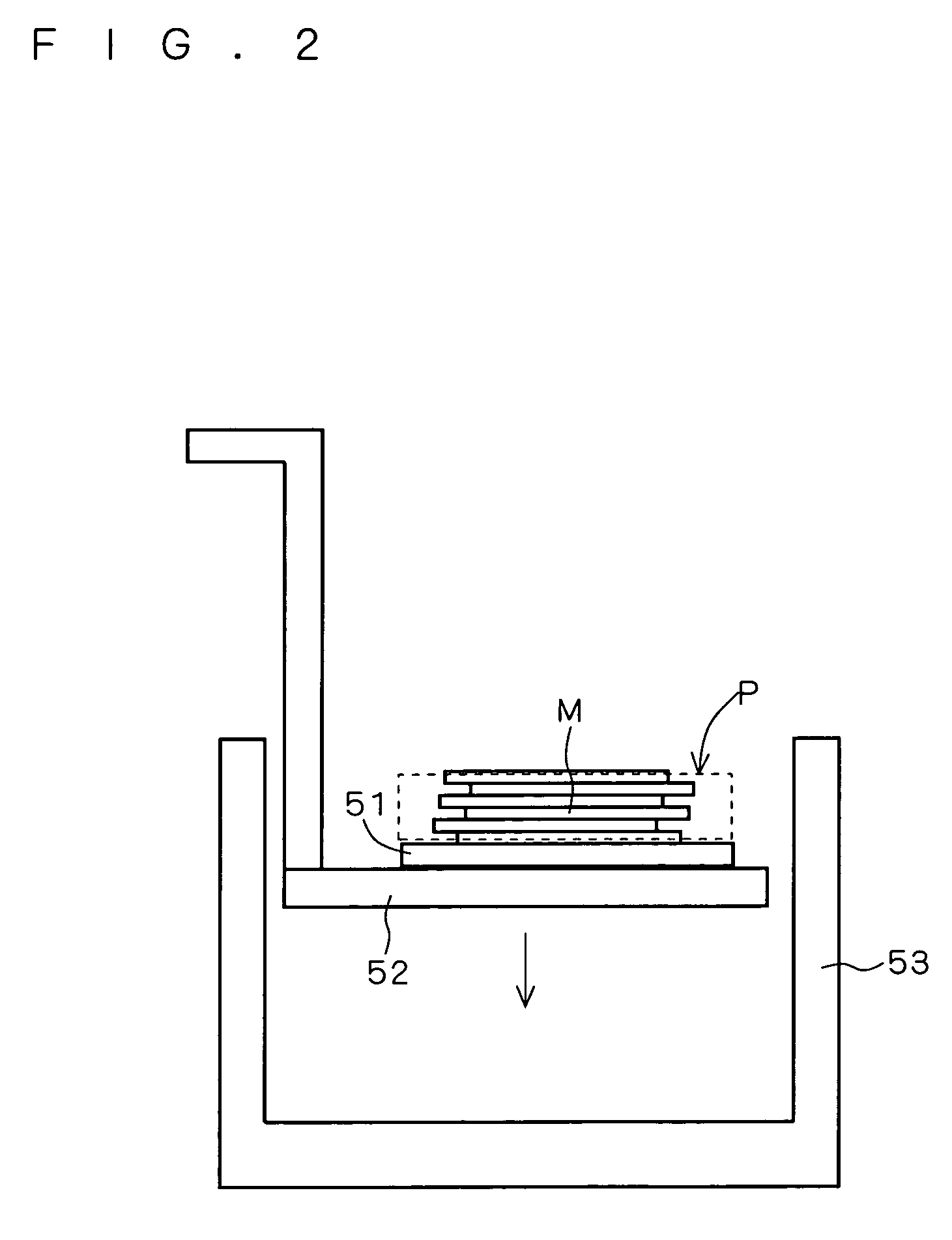Stereolithography apparatus
a technology of stereolithography and apparatus, which is applied in the field of stereolithography apparatus, can solve the problems of preventing the improvement of yield and productivity, unable to achieve the focus on the surface of the resin layer, so as to improve the yield and productivity of models, reduce modeling accuracy, and improve modeling accuracy. the effect of the whole model
- Summary
- Abstract
- Description
- Claims
- Application Information
AI Technical Summary
Benefits of technology
Problems solved by technology
Method used
Image
Examples
example
[0071]FIG. 6 shows a SEM (scanning electron microscope) image of model samples created using the stereolithography apparatus 100 according to the above-mentioned preferred embodiment. The modeling was carried out by employing laser light having a wavelength of 405 nm as a light source and using an acrylate resin (having a viscosity of 1500 to 2500 mPa·s at 25° C.) as the photo-curable resin. Each of the model samples is created on a base surface, and has a 26 by 26 μm square bottom surface, a 5 by 5 μm square top portion, and a height of about 70 μm by stacking seven resin layers each having a thickness of about 10 μm. Although not shown in detail, a modeling error relative to design data was about 2 μm or less.
[0072]Thus, a layer thickness of 10 μm and an exposure resolution of 2 μm were attained in the stereolithography apparatus 100 according to the preferred embodiment.
PUM
| Property | Measurement | Unit |
|---|---|---|
| thickness | aaaaa | aaaaa |
| thickness | aaaaa | aaaaa |
| distance | aaaaa | aaaaa |
Abstract
Description
Claims
Application Information
 Login to View More
Login to View More - R&D
- Intellectual Property
- Life Sciences
- Materials
- Tech Scout
- Unparalleled Data Quality
- Higher Quality Content
- 60% Fewer Hallucinations
Browse by: Latest US Patents, China's latest patents, Technical Efficacy Thesaurus, Application Domain, Technology Topic, Popular Technical Reports.
© 2025 PatSnap. All rights reserved.Legal|Privacy policy|Modern Slavery Act Transparency Statement|Sitemap|About US| Contact US: help@patsnap.com



